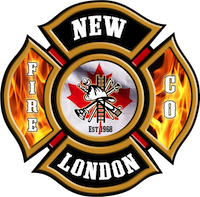Medical First Responders
A certified first responder (Also called an Emergency Medical Responder, Medical First Responder, First Responder, or “Emergency Care Assistant”) is a person who has completed a course and received certification in providing pre-hospital care for medical emergencies. They have more skill than someone who is trained in basic first aid and cardio-pulmonary resuscitation but they are not a substitute for more advanced emergency medical care rendered by emergency medical technicians (EMTs) and paramedics. First responder courses cover the human body, lifting and moving patients, legal and ethical issues, patient assessment, medical and trauma emergencies, cardiopulmonary resuscitation (CPR), automated external defibrillator usage, oxygen administration, suctioning, airway adjuncts, spinal and bone fracture immobilization, and EMS operations.
Many options are available in order to become a certified First Responder in Canada. Courses are offered by many sources including the Canadian Red Cross, and St. John Ambulance, and the Department of National Defence. Certified First Responder courses in Canada are separated into either “First Responder” or “Emergency Medical Responder” level courses. “First Responder” level courses are usually 40 hours in length and is considered the minimum level of training for crews providing medical standby at events, as well as for employment with some private stable transport companies that provide inter-hospital transfer for patients in need of a bed, but are stable and do not require advanced medical care. “Emergency Medical Responder” level courses meet the Paramedic Association of Canada’s National Occupational Competency Profile, and those who receive certification at this level can work for Emergency Medical Services in some provinces.
While all Certified First Responders in Canada are covered under Good Samaritan laws in jurisdictions where they are enacted, in some cases they have a Duty To Act. Certified First Responders who are providing medical coverage to events (such as Red Cross and St. John Ambulance’s Patient Care Divisions at community events), as well as those who are employed by Volunteer Fire Departments, Campus Response Teams, and others who are required to perform Emergency Medical Response as part of their duties all have a Duty to Act.

